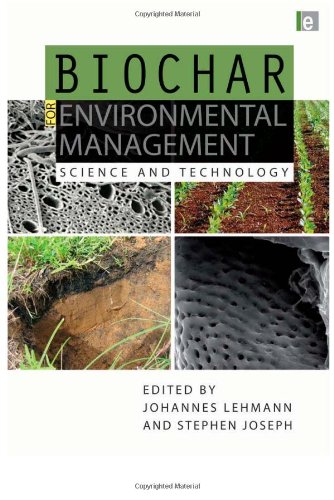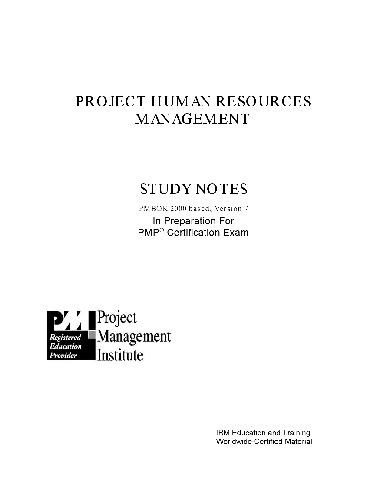Johannes Lehmann, Stephen Joseph184407658X, 9781844076581, 9781441617330
Table of contents :
Contents……Page 6
List of Figures,Tables and Boxes……Page 12
List of Contributors……Page 20
Preface……Page 24
Foreword……Page 26
List of Abbreviations……Page 28
What is biochar?……Page 34
Biochar terminology……Page 35
The origin of biochar management and research……Page 36
The big picture……Page 38
Adoption of biochar for environmental management……Page 42
References……Page 43
Introduction……Page 46
Relevance of extended literature……Page 47
Origin of biochar structure……Page 48
Influence of molecular structure on biochar morphology……Page 50
Loss of structural complexity during pyrolysis……Page 52
Industrial processes for altering the physical structure of biochar……Page 53
Biochar nano-porosity……Page 55
Biochar macroporosity……Page 57
Particle-size distribution……Page 59
Biochar density……Page 60
Future research……Page 62
References……Page 63
Formation and bulk composition……Page 66
Surface chemistry……Page 76
References……Page 82
Introduction……Page 86
Elemental ratios……Page 87
13C-nuclear magnetic resonance (NMR) spectroscopy……Page 91
References……Page 96
Introduction……Page 100
Nutrient properties of biochars and crop production responses……Page 101
Factors controlling nutrient properties of biochar……Page 107
Improving the nutrient value of biochars: Research opportunities and challenges……Page 112
References……Page 114
Introduction……Page 118
Biochar as a habitat for soil microorganisms……Page 119
Biochar as a substrate for the soil biota……Page 122
Methodological issues……Page 124
Effects of biochar on the activity of the soil biota……Page 125
Diversity of organisms interacting with biochar……Page 128
References……Page 135
Why do we need a classification system?……Page 140
Existing definitions and classification systems for charcoal, activated carbon and coal……Page 141
Proposed classification system for biochar……Page 145
References……Page 156
Introduction……Page 160
History of charcoal-making……Page 161
Mechanisms of biochar production from biomass substrates……Page 166
Opportunities for advanced biochar production……Page 172
References……Page 176
Introduction……Page 180
Motivation for biochar soil management……Page 181
Components of biochar systems……Page 182
Biochar systems……Page 187
Case Studies……Page 188
References……Page 199
Introduction……Page 202
Mechanisms of incorporation and movement of biochar in soil……Page 203
Physical changes of biochar in soil……Page 205
Chemical changes of biochar in soil……Page 207
Biotic changes of biochar in soil……Page 210
Conclusions……Page 211
References……Page 212
Introduction……Page 216
Extent of biochar decay……Page 217
Mechanisms of biochar decay……Page 221
Stabilization of biochar in soil……Page 224
Environmental conditions affecting biochar stability and decay……Page 229
A biochar stability framework……Page 231
References……Page 234
Introduction……Page 240
Purpose of biochar application……Page 241
Biochar properties and application methods……Page 247
Methods of application and incorporation: Specific examples……Page 250
Comparison of methods and outlook……Page 255
References……Page 256
Introduction……Page 260
Evidence for reduced soil greenhouse gas (GHG) emissions using biochar……Page 261
Biological mechanisms for reduced GHG emissions following biochar application……Page 265
Abiotic mechanisms influencing GHG emissions using biochar……Page 272
Conclusions……Page 276
References……Page 278
Introduction……Page 284
Nutrient content of biochar……Page 285
Potential mechanisms for how biochar modifies nutrient transformations……Page 287
Direct and indirect influences of biochar on soil nutrient transformations……Page 288
Conclusions……Page 298
References……Page 299
Introduction……Page 304
Evidence for relevant characteristics of biochar……Page 306
Magnitude and temporal dynamics of biochar effects on nutrient leaching……Page 312
Conclusions and research needs……Page 315
References……Page 317
Introduction……Page 322
Sorption properties of ‘pure’ biochars……Page 323
Influence of biochar on the sorption properties of soils……Page 325
Effects on sorption of adding biochar to soil……Page 326
Direct identification of organic molecules sorbed to biochar……Page 327
Conclusions and directions for future research……Page 329
References……Page 330
Introduction……Page 334
Biochar quantification methods……Page 336
Routine quantification of biochar in soils……Page 344
Conclusions……Page 345
References……Page 346
The climate change context……Page 350
Greenhouse gas emissions trading……Page 351
How biochar contributes to climate change mitigation……Page 354
What mitigation benefits are tradable in a pyrolysis for biochar and bioenergy project?……Page 357
Greenhouse gas balance of example biochar systems……Page 358
Issues for emissions trading based on pyrolysis for bioenergy and biochar……Page 366
Conclusions……Page 369
References……Page 370
Introduction……Page 374
Pyrolysis and biochar……Page 375
Examination of a biomass to pyrolysis feedstock prospect……Page 376
Sensitivity analysis……Page 387
Omitted factors……Page 388
References……Page 389
Introduction……Page 392
Developing a methodology……Page 393
Model scenario of a hypothetical village-level biochar project……Page 398
Conclusions……Page 404
References……Page 405
Introduction……Page 408
Biochar’s positioning in the sustainability and climate change agendas……Page 410
The sustainability context for biomass generally……Page 411
Inherent characteristics of the biomass resource……Page 412
Lessons from the first-generation liquid biofuels sector……Page 413
Biochar commercialization framework……Page 414
Commercial factors and business modelling……Page 421
References……Page 422
The tipping point threat……Page 426
Beyond emissions reductions……Page 427
Carbon removals……Page 428
The economics of biosphere C stock management (BCSM) and biochar……Page 429
A policy framework for carbon removals: The leaky bucket……Page 431
Food versus fuel and biochar……Page 433
Conclusions……Page 434
References……Page 435
Index……Page 438







Reviews
There are no reviews yet.